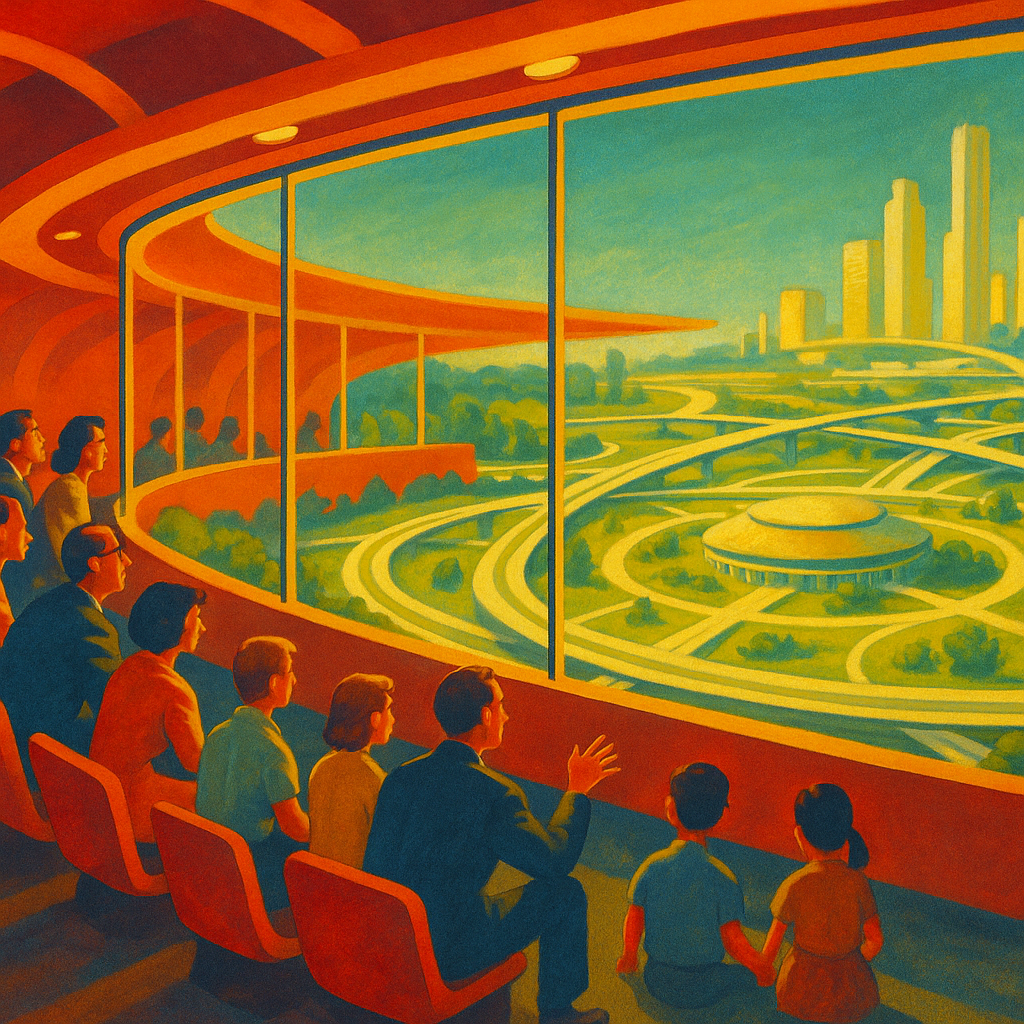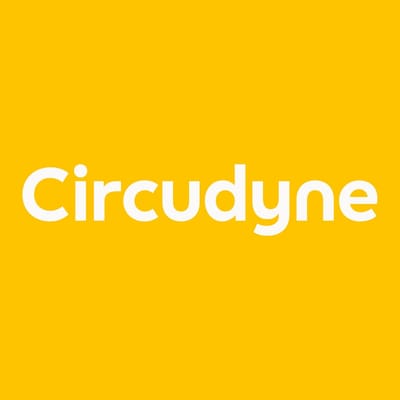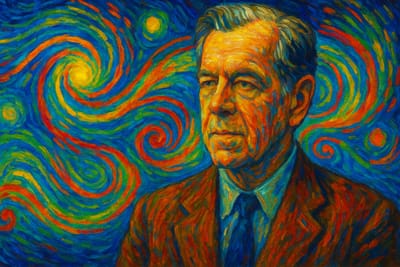Beyond Organizational Charts: Why Self-Disruption Requires Vision, Culture, and Values

In this latest stop on our Circudyne Odyssey, we complete the mini-trilogy of theories from Clayton Christensen: Jobs To Be Done, Modularity, and now, Self-Disruption.
Looking around, firms have lost their understanding about this important capability. If true, that explains the slow adoption for circular transformation, and disappointing progress towards fundamental improvements in general welfare.
- Beyond Organizational Charts: Why Self-Disruption Requires Vision, Culture, and Values
- What Christensen Actually Said
- What Practitioners Typically Miss
- Ford Model e: A Valuable Lesson in Progress
- Making Self-Disruption Theory Actionable
- Why This Matters for Circular Economy
- The Implementation Framework
- Navigating Forward
- The Ultimate Question
- Practitioner Insights: The Self-Disruption Assessment
Clayton Christensen's disruption theory achieved remarkable cultural penetration. Every executive fears "being disrupted." Every startup pitches investors on "disrupting" incumbents. Business schools teach disruption as an inevitable force of creative destruction.
Yet somehow, disruption theory's antidote—self-disruption theory—remains obscure. Ask executives about disruption and they'll describe external threats. Ask about self-disruption and you get blank stares or vague references to "innovation labs."
The result: a divided world split between incumbents doing sustaining innovation and startups attempting disruptive innovation. Rarely do incumbents disrupt themselves. Rarely do startups achieve the scale incumbents command.
This matters profoundly for circular economy transformation.
Circular solutions depend on scale at least as much as their linear counterparts. Repair networks, take-back logistics, material processing infrastructure, consumer education—all require resources and reach that startups struggle to muster. Meanwhile, incumbents view circular business models as threats to existing revenue streams rather than opportunities for self-renewal.
We're left with insufficient circular innovation at scale precisely when the world needs it most. Not because self-disruption theory doesn't work, but because practitioners don't implement what the theory actually requires.
What Christensen Actually Said
Christensen's self-disruption framework is about more than organizational structure. It's about creating space where different logic can flourish.
The incumbent's dilemma is structural. Its core business excels at sustaining innovation: optimizing products for demanding customers; achieving high margins; minimizing risk. These same strengths become liabilities when disruptive opportunities emerge.
Disruptive innovations start with lower margins, uncertain markets, and different performance dimensions. The incumbent’s values reject them (margins too low), its processes dismiss them (too risky), its resources flow elsewhere (sustaining innovations deliver quarterly results).
Christensen's solution requires separation across all three:
- Resources: Dedicated teams, budgets, facilities
- Processes: New decision-making cycles, development approaches, metrics
- Values: Different success criteria, risk tolerance, time horizons
That last element—values—proves hardest to separate. It's also most critical. Without truly different values, autonomous units get pulled back into the parent's logic the moment results disappoint.
What Practitioners Typically Miss
Most organizations implementing self-disruption focus heavily on resources and processes:
- Create new business unit ✅
- Dedicate budget and team ✅
- Establish new location ✅
- Announce autonomy ✅
Then they keep the unit accountable to the parent company's values:
- Expected quarterly profitability ❌
- High margin requirements ❌
- Risk aversion dominant ❌
- Traditional ROI timelines ❌
The organizational chart changes. The decision-making logic doesn't. This incomplete implementation explains why self-disruption attempts so often fail—not because the theory is flawed, but because practitioners implement only the visible, structural elements while neglecting the values, vision, and culture Christensen identified as essential.
Ford Model e: A Valuable Lesson in Progress
Ford Motor Company's electric vehicle transformation offers valuable insight into what complete self-disruption implementation requires. Not as a cautionary tale of failure, but as an honest look at the challenges incumbents face when attempting what Christensen prescribed.
In 2022, CEO Jim Farley announced bold restructuring: splitting the 119-year-old automaker into Ford Blue (internal combustion engines) and Ford Model e (electric vehicles). The move demonstrated serious commitment to self-disruption.
What Ford Implemented Well:
Structural Separation: Distinct business unit with separate financial reporting and stated operational autonomy.
Process Innovation: Revolutionary "assembly tree" replacing traditional moving lines. Twenty percent fewer parts, forty percent fewer workstations, fifteen percent faster assembly. Genuine manufacturing paradigm shift.
Resource Allocation: Universal EV platform developed by "tiny skunkworks team three time zones away from Detroit." New Southern California design hub creating geographic and cultural distance from ICE legacy.
Technology Integration: Software-defined vehicles, over-the-air updates, digital services—capabilities the sustaining business struggled to adopt.
These are significant achievements. Ford took self-disruption seriously, investing billions in organizational architecture that followed Christensen's structural prescriptions.
The Challenge:
Despite strong structural separation, Model e faced mounting losses: $4.7 billion in 2023, $5.1 billion in 2024, with similar projections for 2025. By mid-2025, Ford shifted resources from Model e toward Ford Pro (the profitable commercial division) and delayed next-generation EVs from 2026 to 2028.
Ford’s dilemma results from the predictable tension Christensen described when disruptive units remain accountable to sustaining business values. The question Ford faces: can they maintain the values separation required for disruptive innovation to mature, or will quarterly pressure force premature reabsorption into the parent logic?
Making Self-Disruption Theory Actionable
Ford's experience illuminates exactly what Christensen's theory requires but practitioners struggle to operationalize: values separation, vision development, and cultural connection. These elements seem "soft" compared to organizational charts, yet they're what determines whether transformation survives its difficult middle years.
This is where Circudynamics complements self-disruption theory. The five domains make Christensen's complete framework concrete and actionable:
Horizons: The organizational architecture Christensen prescribed
- Separate unit with distinct strategic direction
- Ford: ✅ Implemented strong foundation
Catalysts: The innovation enabling new performance dimensions
- New platforms, processes, capabilities
- Ford: ✅ Revolutionary manufacturing approach
Living Futures: The compelling vision mobilizing stakeholders through transformation
- ❌ Answers "why endure losses?" with purpose beyond quarterly profit
- Difficult to maintain under market pressure
Connection: Resonance with human needs creating stakeholder resilience
- ❌ Connects transformation to employee aspiration, investor patience, customer enthusiasm
- Challenged when financial results disappoint
Craft: Success metrics aligned with transformation goals, not sustaining business
- ❌ Enterprise-wide integration of “values" in Christensen's RPV, operationalized through explicit decision criteria
- Hardest to maintain when parent company faces quarterly pressure
Christensen told us what to do. Circudynamics shows us how to operationalize it—especially the elements practitioners most often neglect.
Why This Matters for Circular Economy
The two-speed world of sustaining incumbents and disruptive startups creates a scale problem for circular transformation:
Performance Economy Models require infrastructure only incumbents can build, but business model logic only disruptive units can sustain. Without self-disruption capability, we get pilot programs that never scale.
Circular Ateliers need brand trust and distribution reach incumbents possess, but craft-centered values sustaining businesses struggle to adopt. Without values separation, beautiful concepts remain niche experiments.
Service-Based Business Models demand customer relationships incumbents already have, but success metrics (longevity over volume) that contradict quarterly reporting geared towards linear models (initial sales). Without different values, initiatives get killed for "underperformance."
Circular solutions need what self-disruption enables: incumbent resources and reach combined with disruptive business model logic. Startups can't achieve necessary scale. Incumbents won't adopt necessary values. Self-disruption bridges this gap—but only when completely implemented.
The Implementation Framework
Self-disruption requires completing all elements Christensen identified. The five domains operationalize his framework:
- Start with Values (Craft) Define explicit success criteria differing from the sustaining business before creating organizational structure. Example: "Success = market share growth and cost structure improvement, not quarterly profitability, for first 5 years."
- Develop Compelling Vision (Living Futures) Create mobilizing narrative answering "why this transformation serves human welfare beyond quarterly results." Not corporate-speak or hedged bets, but genuine purpose.
- Build Cultural Connection (Connection) Connect transformation to employee aspiration, investor patience, customer needs, community welfare. Not through messaging, but through understanding how change serves people.
- Implement Architecture (Horizons) Create organizational separation protecting different values, enabling different processes, allocating dedicated resources.
- Enable Technology Innovation (Catalysts) Develop new capabilities, platforms, processes the sustaining business couldn't create.
Most organizations start with #4 and #5, then wonder why transformation collapses under pressure. Christensen's theory requires all five. Circudynamics makes them operational.
Navigating Forward
The world learned disruption theory well—perhaps too well. Every incumbent fears disruption. Few attempt self-disruption. The result: insufficient radical innovation at scale precisely when circular transformation demands it.
Circudynamics makes these elusive elements tangible, translating Christensen’s insight into an implementable architecture. His theory explicitly includes values separation, vision development, and cultural connection essential for transformation success.
Practitioners consistently miss these elements, focusing on organizational charts while neglecting what makes transformation sustainable through difficult middle years. Not because these elements are unimportant, but because they're harder to operationalize than structure.
Circudynamics complements self-disruption theory by making these critical elements concrete and actionable. The five domains operationalize what Christensen identified as essential but practitioners struggle to implement.
For circular economy transformation, this recognition is urgent. Circular solutions need scale that only incumbents command, combined with business model innovation that only self-disruption enables. Neither startups disrupting from outside nor incumbents sustaining from within will deliver circular transformation at necessary pace.
We need incumbents who can self-disrupt—implementing everything Christensen's theory requires, including the values, vision, and culture that incomplete implementations neglect.
That capability, more than any specific circular solution, determines whether we achieve circular economy transformation at scale.
The Ultimate Question
Are you doing self-disruption, or just reorganization?
Self-disruption requires different values, compelling vision, cultural connection, structural separation, and process innovation—all five, working together, with genuine separation from the parent's logic.
Reorganization looks like self-disruption but lacks the complete implementation. It gets you organizational charts and press releases, but not transformation resilience.
Which one are you actually doing?
💬 Discuss this post: mention @christian@circudyne.com on Mastodon or your favorite fediverse app.
The rest of this essay provides domain-specific catalytic questions for assessing your self-disruption implementation, including the 'quarterly conflict test,' the 'midnight doubt test,' and the 'new CEO test' for evaluating whether your transformation can survive its difficult middle years.
Circudyne Dynamo members get full access to practitioner insights, frameworks, and transformation tools.

Subscribe to continue reading






